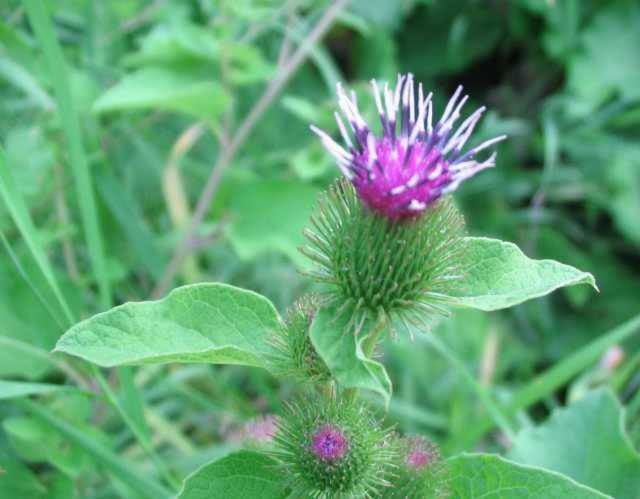Submitted
Christine Friedrichsmeier
We are all familiar with Common Burdock (Arctium minus). It is a large plant that has prickly round burrs with hooked spines that stick to clothing and one’s dog. And if you’ve ever owned a long-haired dog, you will know how truly infuriating it is! Anyone with livestock also curses its existence. Did you know that it was this ingenious characteristic that gave Georges de Mestral, a Swiss engineer, the idea for his 1941 invention of the Velcro hook and loop fastener?
Burdock can be used as a vegetable and is an astounding medicinal herb, used primarily for immune support. It has been so widely and successfully used in this regard for at least the last three thousand years that it has basically followed civilization from Eurasia to the rest of the world, having landed on this continent with settlers about 350 years ago. Unfortunately, as a result, it has become a regionally noxious weed and is becoming increasingly prevalent in Vanderhoof. Much of the source of the local spread of this weed is from cattle purchased from outside the Vanderhoof area.
The plant is one to three metres tall with large, hairy, oval or heart-shaped leaves on hollow lower leaf stalks. Burdock is a biennial, meaning that it does not produce flowers in its first year; only in its second year, after which it dies. The purple flowers in bloom somewhat resemble thistles and at maturity in September produce the well-known seed-head burrs. Each plant can produce about 4,000 seeds which can remain viable for ten years. Burdock is common in farmyards, pastures, along fencelines, roadsides, stream-banks and in idle areas. Livestock find the plant quite tasty, which may impart some bitterness to milk, and the burrs are an absolute nightmare for the fleece and wool producers, causing serious reduction in fleece value.
If you see this plant, remove it immediately. The good news is that common burdock cannot withstand repeated cultivation, and is therefore not very common in crops. It only reproduces by seed, so in other areas, cutting off the emerging flower buds is the easiest means of control. This will have to be done several times over the course of the summer, since the flowers will re-grow.
If you think you may have Common Burdock or any other invasive weed, please contact the Northwest Invasive Plant Council (NWIPC) at 1-866-44WEEDS.
